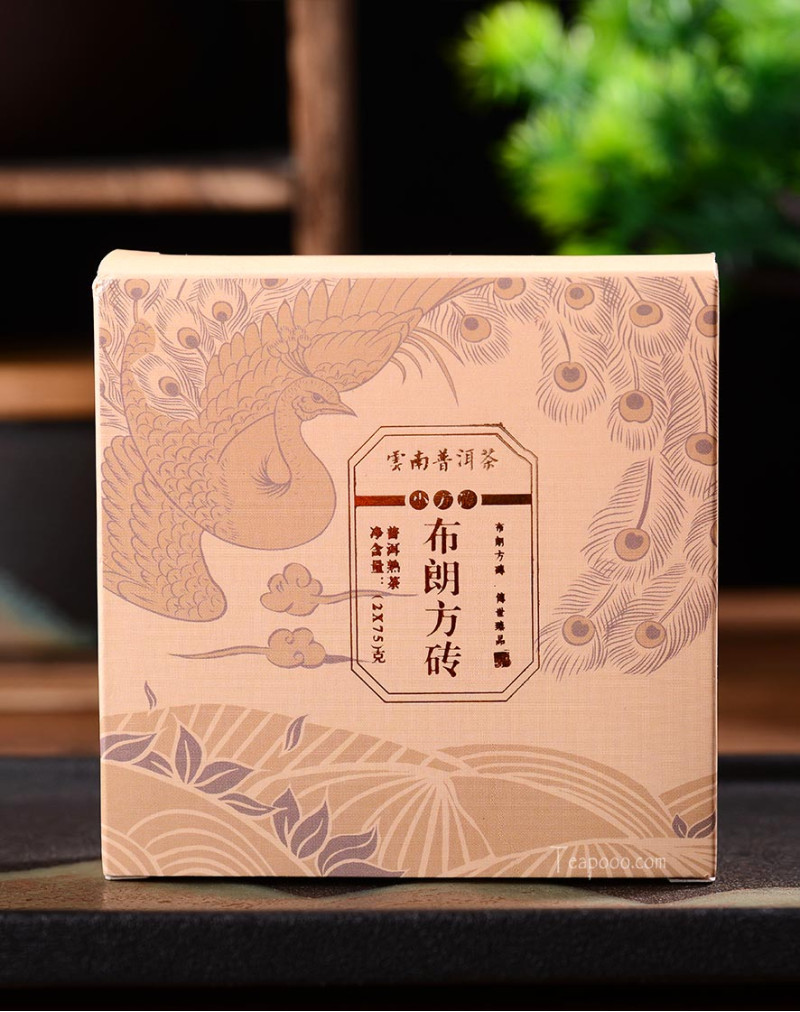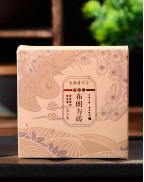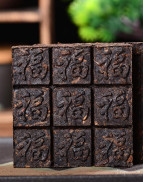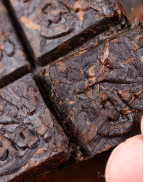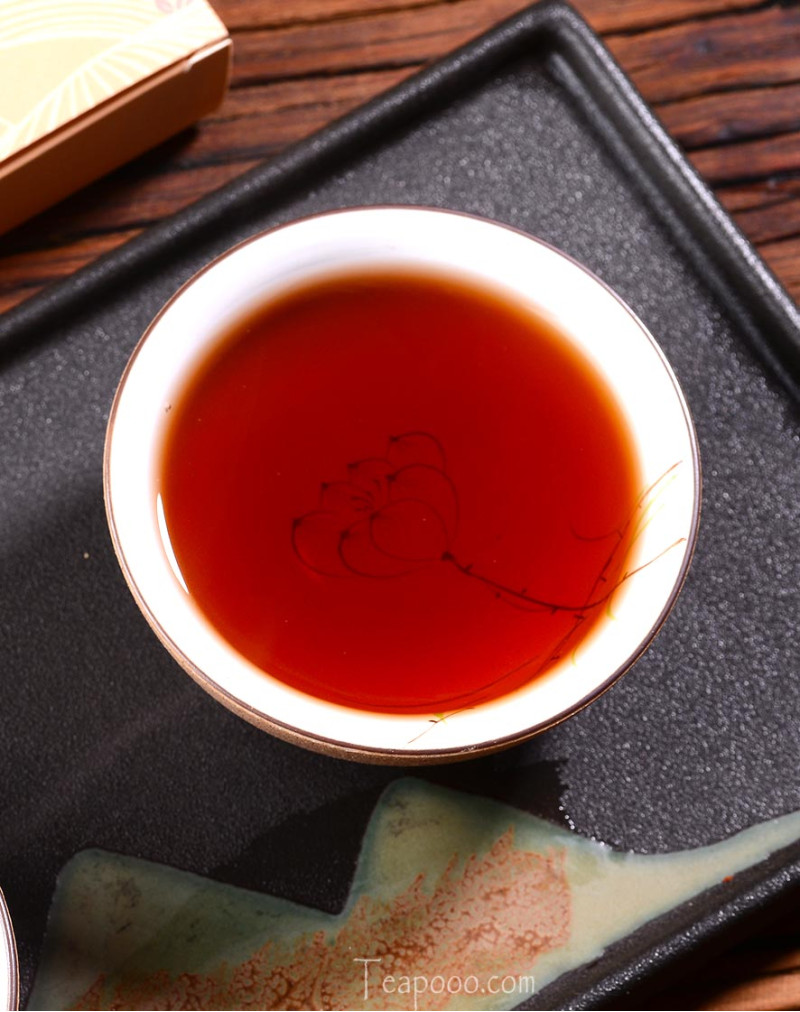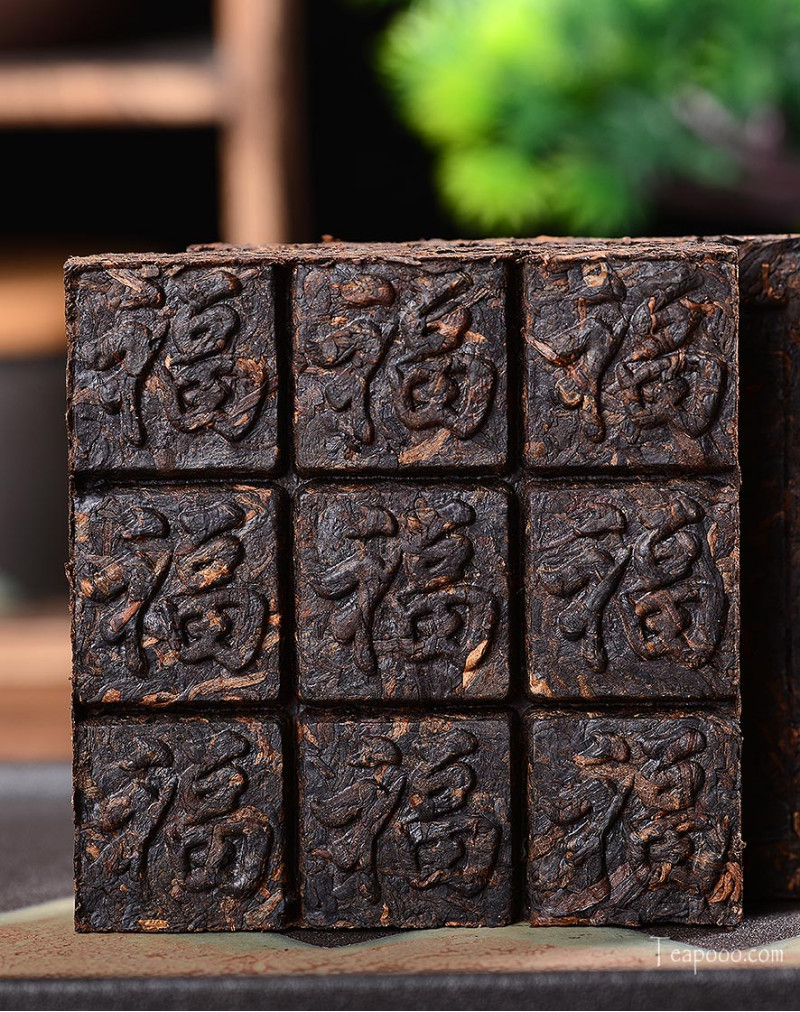Bu Lang Mountain Ripe Pu-erh Tea Brick
- Product Code: Simple
- Availability: Out Of Stock
Basic Info
Origin: Menghai County, Xishuangbanna, Yunnan Province
Taste & Aroma: Mellow,earthy, aged, heavy, sweet taste with flowery flavor
Ingredients: 100% freshly picked leaves from Yunnan Large-leaf Arbor Tea Trees
Shelf Life: Suitable for long-term storage(10 - 20 years)
Liquor: Dark red, bright liquid
Harvest Period: Spring 2014 (First Flush)
Season: Spring tea
Storage: Store in dry and temperate condition. Keep away from odors. The longer it stored, the better it tastes.
Flavor: unflavored
Sourcing : Teapooo
Bu Lang Mountain Ripe Pu-erh Tea Brick
A very mellow tea from Bu Lang mountain area. Fresh tea leaves were picked in Spring 2014( first flush ) and processed into 毛茶 mao cha (loose leaf raw pu-erh tea) and then aged for 7 years and that was wet piled in Menghai County.It brews up a thick, reddish, tea soup with naturaly aged flavor and mellow, sweet aftertaste. This brick tea is the right size and very easy to carry.
About Pu-erh tea
Pu-erh tea is a kind of tea with unique regional characteristics, which is made from Yunnan big leaf sun dried green tea by specific processing technology. Due to the long distance and inconvenient transportation between the original producing area of Pu-erh tea and the cultural developed area of China Central Plains , Pu-erh tea was only recognized by Guanghan people in Ming and Qing Dynasties, which brings a lot of deficiencies and misunderstandings to people's understanding of the history and culture of Pu-erh tea. With the deepening of people's understanding of Pu-erh tea, the influence of Pu-erh tea is increasing year by year.
Maoqing (Maocha) 毛茶 are made from freshly picked tea through rolling and drying. After the Maoqing (Maocha) is made, it is divided into "Ripened Pu-erh" and " Raw Pu-erh" due to the different subsequent processes.
Ripened / Ripe Pu-erh: maocha that has undergone an accelerated fermentation process lasting 45 to 60 days on average to make the taste of pu-erh tea thick,rich,mellow and have an exclusive earthy aroma.
Raw Pu-erh: Pressed maocha that has not undergone wòduī (渥堆) fermentation process.
Pu-erh tea is produced in the tea mountains along the Lancang River. It is produced not only from the original wild tea trees, but also from planted tea trees. The soil in Pu-erh tea producing area is mainly red soil, yellow soil and latosol, which are formed by long-term weathering of granite, purple rock and sandstone. Its pH value is 4-6. It belongs to slightly acidic soil with high content of organic matter, good drainage and permeability, and deep soil layer, which is very suitable for the growth of tea trees.
The climate type of Pu-erh tea producing area is subtropical monsoon climate, with an average annual temperature of 17-22 ℃. The annual temperature difference is small, and the daily temperature difference is large. The annual rainfall is 1,200-1,800 mm. The rainy season is warm and humid. In addition, these tea moutains are located in mountainous and hilly areas, with an average altitude of 1,200-2,000 meters and shrouded by fog in the morning and evening, so the relative humidity is relatively high.The superior climatic conditions have contributed a lot to the growth of large-leaf tea plants.
 Menghai scenery
Menghai sceneryShow Full Description
Pu-erh is typically made through two steps. First, all leaves must be roughly processed into maocha to stop oxidation. From there it may be further processed by fermentation, or directly packaged. Summarising the steps:
Maocha: Killing Green (杀青) -- Rolling (揉捻) -- Sun Drying (晒干) -- Green/raw (生普, sheng cha) --
Dark/ripe (熟普, shu cha) -- Piling(渥堆) -- Drying(干燥)
Menghai County
Menghai tea growing area is one of the four major tea producing areas in Yunnan and one of the six Pu 'erh tea producing areas in China.
 Meng hai puerh tea garden
Meng hai puerh tea garden
Menghai County has a long history of tea growing. Located in the center of the cradle of tea in the world, Menghai County is also one of the birthplaces of Pu 'erh tea. It is also the source of Yunnan-Tibet tea horse ancient Road and an important transfer station for Yunnan-Myanmar trade.
History
With profound tea culture and customs, Menghai is a living history of tea. You will find that many things here are closely related to tea.
In the history of Tea in China, it is recorded that Pu people (now Bulang people) were the earliest tea planters. Up to now, a large number of ancient tea trees and wild tea trees are preserved in Menghai County's Bulang Mountain, Xiting, Bada, Mengman and Menggong. Among them, in Hesong, there is a wild "tea king" of more than 1,700 years, which is regarded as a sacred tree by local villagers. In Nannuo Mountain area, there are artificial tea trees of more than 800 years ago.
Before the Qing Dynasty (1636 - 1912), Pu-erh County was the main distribution center of Pu 'erh tea. In the late Qing Dynasty, the production technology of Pu 'erh tea was gradually transferred south, from Pu 'erh County and Simao to Yibang, Yiwu, Menghai and other regions. In the early years of the Republic of China, due to various political and economic factors, transportation problems and rampant plague, the trade center of Pu 'erh tea was completely replaced by Menghai County area.
Because menghai Tea area is at a lower latitude and altitude, with a slightly higher temperature and more rainfall, the fresh tea leaves used for making Pu 'erh tea here is characterized by strong taste, rich aroma and obvious astringency.
Menghai area may not be as famous as Mengla area as for historical tea production, after all, Among the six ancient tea mountains, Yiwu and Yibang (tribute tea producing areas) occupied a prominent position in ancient times, but menghai's status can not be underestimated now.
In history, tea produced in Menghai needs to be transported to Pu 'erh Prefecture by horses for trading.In the Ming and Qing dynasties, a large number of tea merchants were gathered in Menghai County and tea trade was once prosperous. During this period, the ancient tea horse road to India and Tibet was also opened. In modern times, in order to vigorously develop Menghai Pu 'erh tea, Yunnan Tea Scientific Research Institute was specially established in Menghai and accumulated rich scientific research achievements.
 Ancient Pu 'er tea tree
Ancient Pu 'er tea tree
The reasons why Menghai tea is of high quality and popular with tea lovers are as follows:
Geographical conditions
Menghai Pu-erh tea grows in the primeval forest on both sides of lancang River, which is wet and misty all year round.
Away from factories and pesticide pollution, these virgin forest layers have deep, fertile soils that are good for producing high-quality organic teas. In addition, many tea trees in Menghai Pu-erh tea producing areas are mixed with camphor trees, so the tea is especially excellent.
Good varieties
Tea varieties grow in here are yunnan large-leaf species, belonging to tree-type large leaf species, known as Menghai Pu 'erh tea species.
The buds and leaves of this variety are large and tender (covered with abundant silvery down), as well as rich in chemical nutrients, so the tea produced from these buds and leaves has rich aroma and strong taste.
Traditional handicraft
 Freshly picked Pu-erh leaves
Freshly picked Pu-erh leaves
In order to make Pu 'erh tea, the freshly picked fresh tea leaves need to be made into Maoqing (Maocha) 毛茶 first, and then the Maoqing (Maocha) can be steamed and pressed into compressed Pu 'erh tea in various shapes.
Pu 'erh tea tastes better as it is stored for a longer time
Pu’erh tea requires several years to mature and gets only better with age. Pu’erh teas are much like fine wines, which become smoother and more balanced with age. Some expensive Pu-erh teas are made from high-quality raw materials (Maocha) and have been preserved for a long time.
A variety of drinking methods
Pu-erh tea can be brewed in boiling water for drinking as usual, or boiled in containers. In some ethnic minority areas of China, pu-erh tea can also be used to make some delicious local snacks.
Pu 'erh tea can be mesmerizing
People who like to drink Menghai Pu-erh tea have this feeling: "you don't know if you don't drink it, you can't live without it." once you drink Menghai Pu-erh tea, you will be impressed by the mysterious charm of Menghai Pu-erh tea. This is the characteristic of Menghai Pu-erh tea, which explains why many Pu-erh tea lovers like Menghai Pu-erh tea.
Good for your health
Pu 'erh tea has a long history and is widely known in China.Various chemicals found in Pu 'erh tea are of great benefit to the body. Generally speaking, menghai Pu-erh tea can be used as a daily drink for all seasons. Because the caffeine content is not high, even if you drink some Menghai Pu-erh tea before bed, it won't adversely affect your sleep.
| Chinese Gongfu Method | |
| Tea | 10g |
| Water | Gaiwan 3oz (85ml) |
| Time | 9 steeps: rinse one or twice,20s,30s,40s,50s,1m10s,1m30s,2m,2m30s,3m30s |
| Temperature | 100ºC/212ºF |
| Teapot Method | |
| Tea | 10g |
| Water | 8oz (230ml) |
| Time | 5 steeps:30s,1m,2m,3m,4m |
| Temperature | 100ºC/212ºF |


